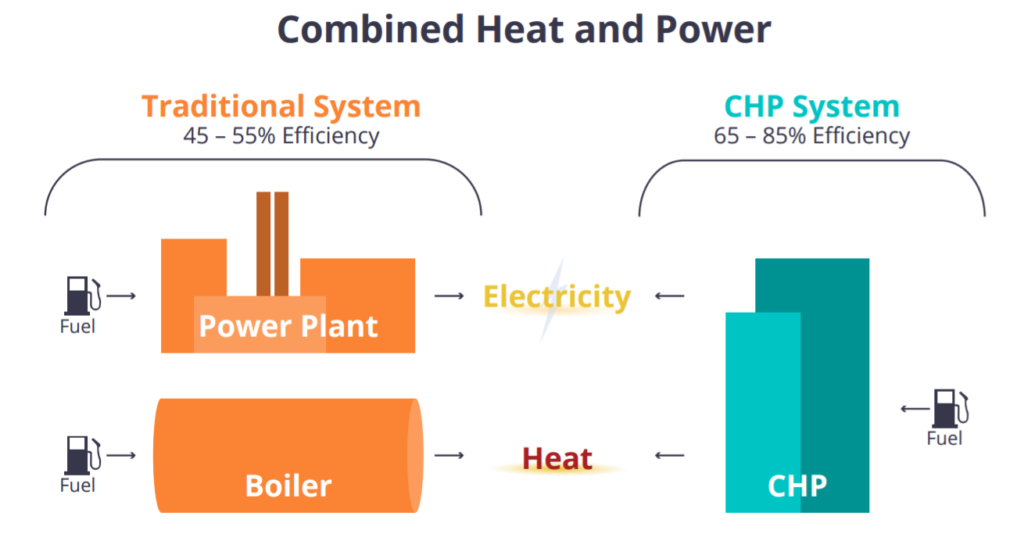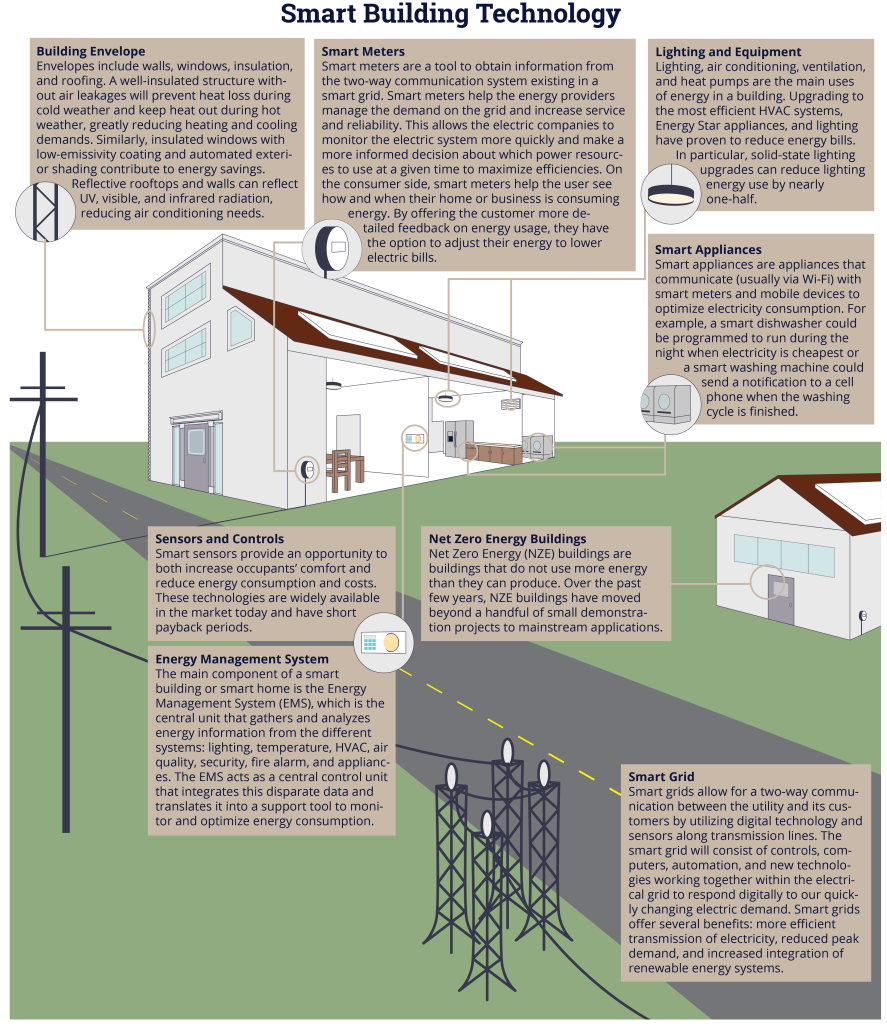What is Energy Efficiency?
Energy efficiency is the process of reducing the energy needed to provide products and services. The benefits of efficiency upgrades typically outweigh the costs of implementation, making it a smart option for many building owners. Energy savings from greater efficiency generate significant cost savings. On average, 30 percent of the energy used in U.S. commercial and industrial buildings is used inefficiently or unnecessarily. Improving the building efficiency in those sectors by just 10 percent would save building owners a combined $40 billion annually.
Energy efficiency technologies may vary across end-use sectors because of the difference in scale of energy use and processes requiring energy. For example, the industrial sector consumes the largest share of energy in the United States and energy supports numerous manufacturing technologies and processes. Five percent of energy is used as electricity to maintain a facility’s lighting, appliances, and heating, ventilation, and air conditioning (HVAC) system. Fifteen percent powers equipment-handling applications and motor-driven equipment like pumps, air compressors, and fans. The remaining energy goes into process-related applications, such as process heating or chemical processes. Optimizing these energy-intensive components drives down operational costs, increasing the potential for improved profitability for manufacturers.
Energy efficiency measures can range from installing efficient technologies and equipment to adopting energy-saving practices. Technologies such as smart buildings and combined heat and power (CHP), highlighted below, achieve energy and cost savings via a whole systems approach.
Smart Buildings
Smart buildings integrate sensors and controls that connect all of the core building systems (e.g., lighting, appliances, plug-loads, HVAC systems, renewable energy generation, energy storage systems) to a centralized management system. Each part of the building communicates with a central hub to respond and adjust to changing conditions in order to maximize energy efficiency, comfort, and productivity.
Although each individual component in a smart building is important, the key attribute of a smart building is that all components work together. What makes a smart building “smart” are the integrated sensors and controls that connect all of the building systems to the centralized control and monitoring systems. Smart buildings revolve around a platform of open access to information. The integrated structure of the building management system is critical to optimizing the flow of energy within the building.
Smart Buildings: Rising Demand and Falling Costs
The trend towards dynamic energy-efficient buildings presents tremendous opportunities for companies to be on the cutting edge of sustainable building design. The global market for smart homes and buildings is expected to grow to more than $35 billion by 2020. Significantly, $12.4 billion of this market is expected to be in North America and the sector is expected to grow at more than 25 percent per year. This growth is attributed to government regulations, rising energy costs, and increasing environmental awareness.
Smart building component costs have decreased over the past few years, making average return-on-investment (ROI) payback periods on smart building upgrades very short — 2 years in many cases. In addition to the paybacks from reduced energy expenditures, smart buildings have numerous indirect benefits: increased comfort in homes and offices; increased productivity of workers due to greater comfort; efficiencies in water use; better integrated security systems; and emergency detection of fires or other dangerous situations.
Combined Heat and Power
Combined heat and power (CHP) is the production of both electricity and thermal or mechanical energy through a single system to meet a local demand. CHP recovers and utilizes waste heat from electricity production to enable cogeneration, which can significantly reduce fossil fuel use and greenhouse gas emissions. In fact, CHP systems have the capacity to improve energy efficiency by up to 40 percent. A form of distributed generation, CHP can have outsized benefits, especially when implemented in industrial, commercial, and institutional buildings that require a large concentration of energy. CHP is also compatible with numerous fuels, such as natural gas and biomass.

Potential Energy Efficiency Jobs
- Building operator
- Energy auditor
- Architect, general and landscape
- Software developer and technician
- Electrical engineer and technician
- Mechanical engineer and technician
- Construction manager, equipment operator, and laborer
- Electrician
- HVAC-R mechanic and installer
- Insulation worker
